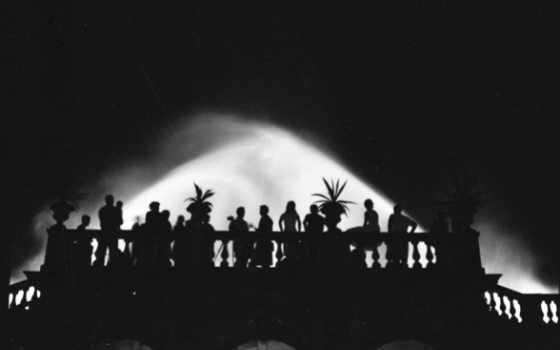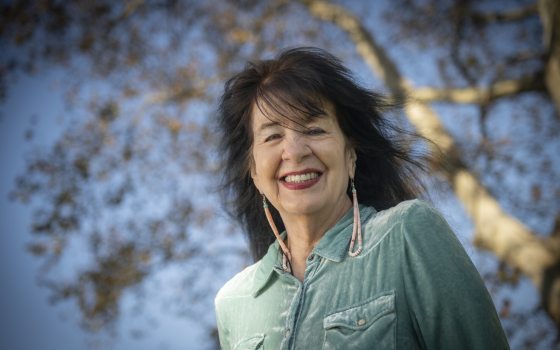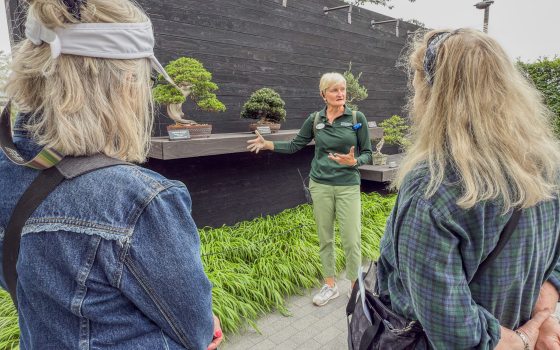A Gift of Pictures
The Longwood Gardens Library & Archives recently received a generous gift from longtime guest, local historian, and avid travel photographer, Eugene L. DiOrio. Since May 2013, Mr. DiOrio has presented 1,073 black-and-white negatives, 11,652 color slides, and approximately 3 boxes of brochures, pamphlets, and maps to Longwood. The collection covers Gene’s local, regional, and European travels, with a focus on historic architecture, estates, and gardens; it will comprise approximately 40,000 black-and-white negatives and 40,000 color slides when complete.
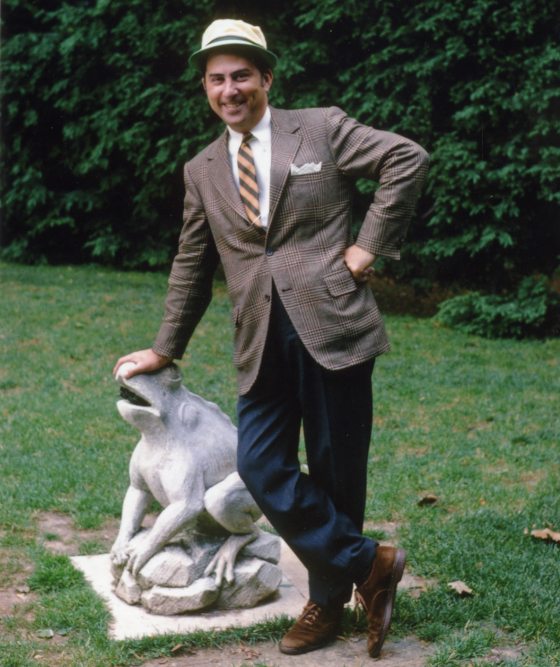
Archivist Judy Stevenson, responsible for processing the Eugene L. DiOrio Collection at Longwood, explains its significance: “Gene’s body of work includes more than 1,000 photographs of Longwood Gardens taken over several decades from the 1950s onward, giving us wonderful documentation of the spaces and structures over time. He has a great eye for composition, and captured some lovely scenes throughout the Gardens. In fact, Gene credits Longwood for fostering a lifelong love of formal gardens and architecture. He often photographed the same European gardens visited by Pierre and Alice du Pont, and his collection weaves together many of the same themes present in their lives, including inspiration through travel. His pictures tell a story through the lens of a man inspired by the garden the du Ponts built.”
Indeed, the value of Gene’s gift lies in the stories it tells. Many of the photographs provide glimpses of the Gardens in the late ‘50s and early ‘60s, at a time when Longwood had been transformed from a private estate to a public horticultural display, and was undergoing great change in order to enhance public comfort and education.

A Gift of Story
David Sleasman, Library & Information Services Coordinator, and Jennifer Fazekas, New Media Strategist, spoke with Gene about his interests in architecture, local history, travel and photography, as well as his memories of Longwood.
The man behind the camera describes himself as “a native Coatesvillian.” Gene studied finance at Villanova, worked for Lukens Steel Company, and presently serves as Historical Advisor for the National Iron & Steel Heritage Museum in Coatesville. Despite his deep local roots, his early love of reading became a roadmap to a lifetime of travel.
Gene: When I was grade-school age, I’d go to the Coatesville Public Library and I cut my teeth on a wonderful, famous set of books by John Stoddard, who traveled all over the world. They whetted my appetite, so that when I got older, I wanted to travel. My interests in art, architecture, history, and so forth, pretty much determined the places I wanted to go. Longwood prepared me for those places.
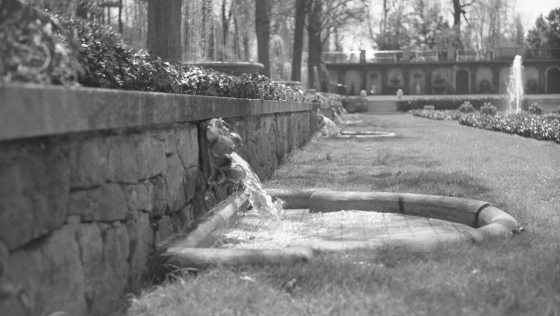
Adventures Abroad
Longwood: When did you start to travel internationally?
Gene: My first trip to Europe was in 1963. Of course I wanted to do it in a very grand way. With my passion for ships, I went over on Cunard’s great Queen Elizabeth and came back on the Queen Mary. I spent most of that trip in Paris, though I did take an excursion to the Loire Valley, and other places like Versailles and Fontainebleu and the Champagne district—that was a very pleasant experience.
My trip in 1968 was planned around country touring. I stayed with four families in Scotland and five in England. My first family’s name was MacMillan—General Sir Gordon MacMillan—well, his wife was a keen gardener and she had huge greenhouses and she always had students, a couple of whom lived in the house, Finlaystone, that overlooked the Clyde.
The first night at dinner, Lady MacMillan asked me, “Eugene, you live in Pennsylvania. Have you ever heard of a place called Longwood Gardens?” Then she proceeded to tell me about a young man, whom she’d trained in her garden, who had won a Longwood internship. So, I’m away from home and here we are.

Through the Lens
Longwood: How did you become interested in photography?
Gene: My interest in photography developed from places I wanted to go and things I wanted to see, particularly architecture. I’m not a deep-end technician, I just like to take pictures. I was self-taught. I was always happy if I captured what I saw.
I’ve used a variety of cameras and film, mostly black and white when I started. I had a camera that used to take these long pictures—116 mm, I think, was the film. Later I had a Zeiss Ikonta that took square negatives, and I liked those because I could crop them. But then I got interested in slides, primarily because I could share them. People wanted to see what I’d taken—I’ve done many travel lectures over the years.
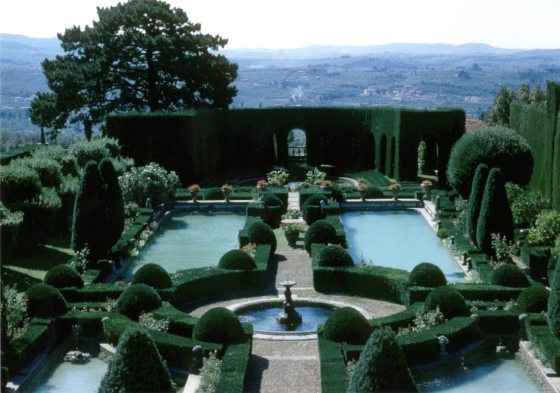
Local History
Longwood: Tell us about your involvement with local history.
Gene: I became interested in the historic preservation movement early on. I think what really encouraged it was my first trip to Europe. As I walked around Paris it hit me—why is this city so attractive? It’s because they kept so much.
I had the bright idea that my home town should have a historical commission, and I got working on it. That was an effort that led to other things. I was asked to serve on the Board of the Chester County Historical Society, the Board of the Brandywine Battlefield Commission, and I got involved with the Chester County Parks & Recreation Department and was heavily involved with the restoration of Hibernia Mansion.
After Chester County had its tricentennial celebration in 1982, there was a feeling we ought to have a small museum in Coatesville of the city’s history. So we eventually incorporated the Graystone Society. It has now grown into the National Iron & Steel Heritage Museum, which we’re trying to develop as a museum of industrial history, focusing on Lukens Steel Company.
The Lukens Steel Company archives are at the Hagley now, but initially they were here at Longwood, and the Longwood Library was housed in the Peirce-du Pont House. I became the liaison between Lukens and the library. During my first few visits, I met Frank Battan, who had been a secretary to Mr. du Pont and was also his pilot. Mr. Battan loaned me a book early on—Edith Wharton’s book on Italian Gardens, illustrated by Maxfield Parrish. It all came together—I love Italian gardens, it fits my heritage in a way.
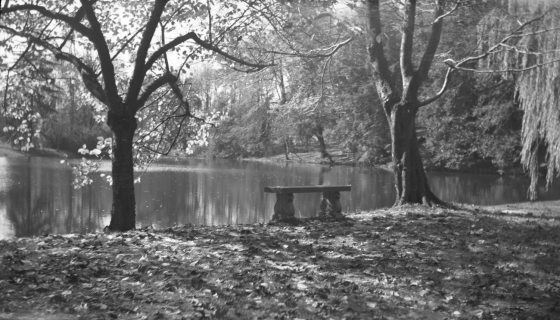
Longwood Connections
Longwood: Have you interacted with other Longwood staff over the years?
Gene: I met Russell Brewer because I'd been here many times and seen the Main Fountain Garden light displays, and I thought it would be great to see how they operated. He took me to the little control room and I watched with fascination as he moved all these buttons and dials. And I remember he told me, “You know someday we’re gonna have to dig up the whole Main Fountain Garden and redo the whole thing.”
Another person I knew was Lois Paul, head of the Education Department here for a number of years. I got acquainted through her husband, who was Executive Director of the Chester County Parks & Recreation Department. I was on that Board for many years. Later I got to know the previous Director of Longwood, Fred Roberts, because he was a colleague on the Brandywine Battlefield Park Commission in Chadds Ford.
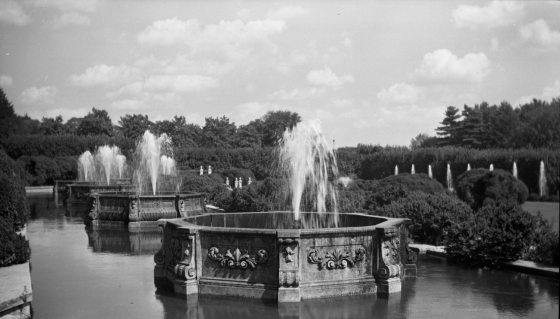
Home Base and Inspiration
Longwood: What about our Gardens do you find so appealing? What has kept you coming back for so long?
Gene: You have here one of the best Italian Renaissance gardens in America. While God didn't give me any great talent, my gift is appreciation—of music, performing arts, sculpture, painting, visual arts, and of course architecture. Longwood has so much of it, and it's always been a source of great delight to come here. I’ve always said that Longwood is the gold standard of gardens. I would tour some other garden and think of Longwood.
Longwood: What are your earliest memories of the Main Fountain Garden?
Gene: Well, for years the west entrance was the way you got in here. And the Main Fountain Garden was the first thing you saw, the first thing that hit you. It was so dramatic, so grand. Many times we’d bring people just to see them. It was a great show, the lights and the fountains—I took a few black and whites.
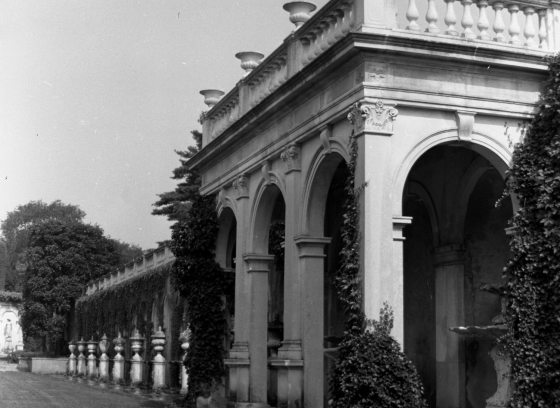
Longwood: These photos are especially welcome during our present Main Fountain Garden Revitalization Project, allowing us to enjoy the fountains as they once were, while looking forward to the summer of 2017, when they’ll flow anew.
Gene: I’m glad to work with Longwood. It culminates all my years of loving the place. I wanted the pictures to go to an institution that not only has the capacity to properly store them—I also wanted them used. And I’m happy, too, that my picture collection will stay here in Chester County. From a very personal standpoint, that’s important to me.
Later, Eugene DiOrio shared his hope that he’ll witness, once again, the Main Fountain Garden in its glory. On opening day in 2017, memories will surely flow. But he also harbors another hope—that, when the button is pushed, there will be champagne flowing through those fountains.
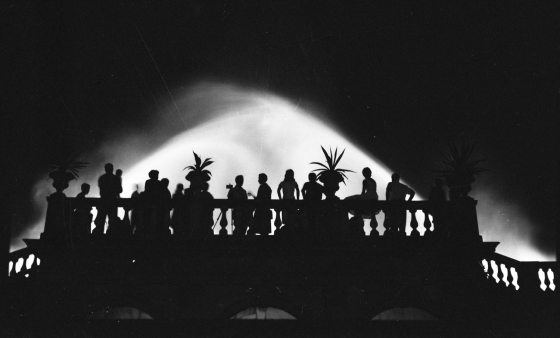
Please note that excerpts from our interview with Gene have been edited for brevity.
